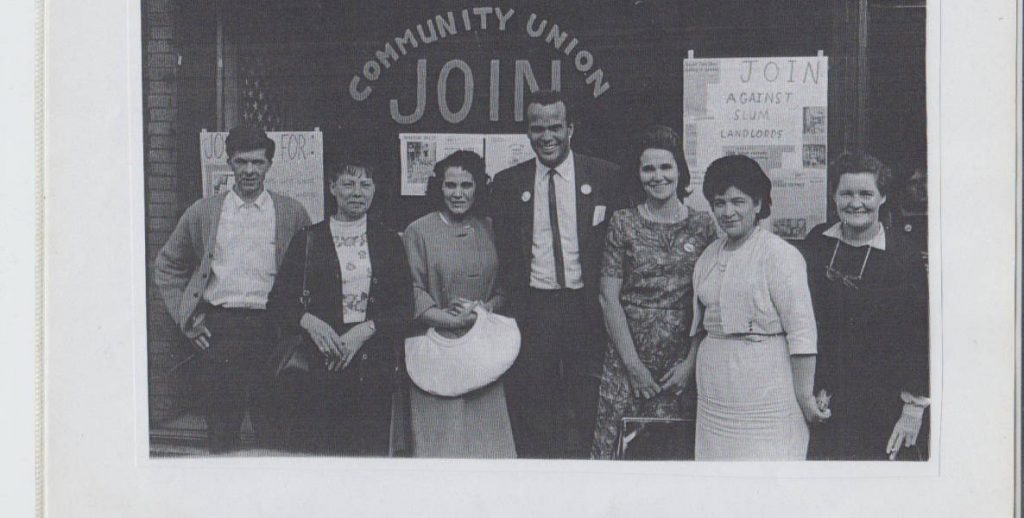“Most liberal whites react to ‘black power’ with the question, What about me? rather than saying: Tell me what you want me to do and I’ll see if I can do it,” wrote Stokely Carmichael, legendary leader of the Student Nonviolent Coordinating Committee, in a 1966 New York Review of Books article titled “What We Want.” “One of the most disturbing things about almost all white supporters of the movement has been that they are afraid to go into their own communities—which is where the racism exists—and work to get rid of it. They want to run from Berkeley to tell us what to do in Mississippi; let them look instead at Berkeley.”
That racism was born and persisted most virulently within white communities was no revolutionary idea, but the idea that white people must be the ones to end it was at that time, and is still profoundly relevant today. From the comedian W. Kamau Bell writing that Donald Trump should make white people feel embarrassed to be white people and prompt them to take action, to the leaders of the “Black Lives Matter” movement saying “organize yourselves” to white people, to our very own recent Mummers parade which was marred by acts of racism and transphobia, the idea that white people must “come get their boy” seems to be on everybody’s lips in 2016.
A new exhibit called “Organize Your Own: The Politics and Poetics of Self-Determination Movements,” opens this Thursday to tackle precisely the question of how Carmichael’s historic call is relevant now and here in Philadelphia. The exhibit highlights a little known history—that in Chicago in the 1960s, several groups of working class white people were organizing their own, and working with people of color, in a shared struggle against racism and economic exploitation.
The exhibit combines historical photographs documenting the work of these groups with new visual work from contemporary Philadelphia artists inspired by this history. There will also be special events featuring performances, readings, and film screenings about the concept of whiteness, and what it means to be a white person involved in anti-racist work. The project will open in Philadelphia, then travel to Chicago.
“There are a lot of unresolved feelings about what it means to be white in Philadelphia and what it means to not be white in Philadelphia,” says the exhibit’s curator, Daniel Tucker. “Some aspects of that culture need to die, some need to be strangled, and some need to be worked through. I think that maybe the Mummers is an interesting case study in that question. Does this need to die, be strangled, or be worked through? Ignoring it isn’t working anymore.”
Tucker, a writer and curator, came to Philadelphia last year to teach at Moore College of Art & Design. But the idea for the show was born while he was living in Chicago and editing AREA, a magazine devoted to making his town a “socially just” city. Several years ago, he published an article about the work of two Chicago groups in the 1960s—JOIN Community Union and the Young Patriots Organization—made up of working-class white people who had largely moved from Appalachia to Chicago looking for jobs, but instead found themselves facing bad housing conditions, police brutality and “urban renewal schemes.” To combat these ills, they allied themselves briefly with the Black Panthers to form the “Rainbow Coalition.”
“This history blew my mind,” says Tucker. Today the way we often talk about white people who participate in anti-racist organizing is as “allies” or “supporters,” creating the sense that the struggles and risks belong to people of color, and that white people should help, but can choose to or not. This wasn’t always the case, this history reveals, and doesn’t have to be. “It isn’t just middle-class white people with a lot of resources from a university who have stepped into a support role,” Tucker says. “There are histories of white people who perceive themselves as being very much in the same conditions and struggles as people of color.”
“Some aspects of ‘white’ culture need to die, some need to be strangled, and some need to be worked through,” says Tucker. “I think that maybe the Mummers is an interesting case study in that question. Does this need to die, be strangled, or be worked through? Ignoring it isn’t working anymore.”
Tucker shared this history, and Stokely Carmichael’s call to action, with the artists he contacted to participate in “Organize Your Own,” asking them to make art that responded to how that history might be relevant today or to create work that explored the concept of “whiteness” and what it means.
By inviting 21st Century poets and artists to engage with this history, Tucker hopes to create a space for dialogue about racial and economic justice today. In Philadelphia—as in the United States—we are at a crucial juncture in the movement for justice. “Organize Your Own” is an avenue to thinking about race, organizing and what white people can do to be more than allies, but partners, in a struggle in which every single citizen of Philadelphia has a stake. “By shedding some light on these histories it might add a helpful layer to help us understand our futures,” Tucker says.
The opening event at Kelly Writers House tonight will feature local performance artists Jennifer Kidwell and Salem Collo-Julin, poet laureate Frank Sherlock, author and DJ Marissa Johnson-Valenzuela. Other events in the month-long exploration include the screening of a documentary that explores the partnership between the Young Patriots and the Black Panthers, introduced by Young Patriots member Hy Thurman; a panel discussion about the history of the Rainbow Coalition; a performance by Amber Art and Design and a workshop/panel featuring four socially-engaged Asian American artists. For more information and a full schedule of events, go here.
Header Photo: Harry Belafonte and members of JOIN Community Union, courtesy of Hy Thurman

